sri structure
SRI was established to fulfil the following aims:
(1) To conduct scientific research and education programs that lead to the adoption of practices and technologies that preserve and enhance bio- diversity and the integrity of nature's ecosystems. These programs will promote awareness and the acquisition of knowledge and skills pertinent to instigating and maintaining processes of rehabilitation, preservation and conservation of resources such as land, clean air and water, native flora and fauna and indigenous cultural heritage;
(2) To benefit both present and future generations by encouraging and undertaking scientific research, development and education that promotes ethical, sustainable, and ecologically sound, use of resources and other human activity undertaken in the pursuit of satisfying human needs;
(3) To provide education facilities and services, with emphasis on experiential learning for all ages, to promote widespread awareness of the significance of, and potential for, living practices and resource management that is ecologically sustainable;
(4) To implement and demonstrate sustainable living practices and technologies by way of model settlements that provide for day visits and short and long term residential courses, so that students and the general public will have the opportunity to gain an understanding of, and the skills for, sustainable practices and resource management;
(5) To provide design and consultancy services and products that assist people to learn about and practice, lifestyles that are ecologically sound and socially and economically sustainable;
(6) To pursue the objectives of Sustainability Research Institute in such a way as to become financially self-sustaining, e.g. by way of fees for various services provided to a range of client groups;
(7) To conduct scientific research, demonstrations and educational programs, for sustainable business practices;
(8) To progressively develop a widespread network of sites and facilities, managed by co-operating but autonomous sustainable learning communities that follow common principles and pursue the objectives of Sustainability Research Institute in a variety of ways and situations;
(9) To promote worldwide, awareness and understanding of the need and potential for sustainable living practices and resource management, by liaising with governments and relevant bodies around the world for the sharing of relevant information, resources and experiences, and to promote collaboration on joint projects;
(10) To participate in the social and economic development of sustainable learning communities in both developed and developing countries by way of relevant cultural and resource exchange programs;
(11) To provide food, accommodation and employment in ways that meet the needs of socially, economically and/or mentally disadvantaged people.
The Charity has been registered with the ACNC since 3 December 2012, having previously been registered with the Australian Taxation Office.
Definition of Charity and Charitable Purpose
Section 5 of the Charities Act defines a charity as an entity:
(a) that is a not-for-profit entity; and
(b) all of the purposes of which are:
(i) charitable purposes that are for the public benefit; or
(ii) purposes that are incidental or ancillary to, and in furtherance or in aid of, purposes of the entity covered by subparagraph (i); and
(c) none of the purposes of which are disqualifying purposes; and
(d) that is not an individual, a political party or a government entity.
The definition of ‘charity’ in s 5 of the Charities Act requires that a charity must have ‘charitable purposes.’ Subsection 12(1) of the Charities Act defines charitable purpose to mean any of the following:
(a) the purpose of advancing health;
(b) the purpose of advancing education;
(c) the purpose of advancing social or public welfare;
(d) the purpose of advancing religion;
(e) the purpose of advancing culture;
(f) the purpose of promoting reconciliation, mutual respect and tolerance between groups of individuals that are in Australia;
(g) the purpose of promoting or protecting human rights;
(h) the purpose of advancing the security or safety of Australia or the Australian public;
(i) the purpose of preventing or relieving the suffering of animals;
(j) the purpose of advancing the natural environment;
(k) any other purpose beneficial to the general public that may reasonably be regarded as analogous to, or within the spirit of, any of the purposes mentioned in paragraphs (a) to (j);
`(l) the purpose of promoting or opposing a change to any matter established by law, policy
or practice in the Commonwealth, a State, a Territory or another country, if:
(i) in the case of promoting a change – the change is in furtherance or in aid of one or more of the purposes mentioned in paragraphs (a) to (k); or
(ii) in the case of opposing a change – the change is in opposition to, or in hindrance of, one or more of the purposes mentioned in those paragraphs.
Note 1 to the definition of ‘charity’ in s 5 provides that an entity’s governing rules, activities and any other relevant matter must be considered when determining its purposes.
Our charity, SRI, is relevant to
(a) the purpose of advancing health;
(b) the purpose of advancing education
(c) the purpose of advancing social or public welfare;
(j) the purpose of advancing the natural environment. in particular (b) and (j)
11. The Charity has not changed its objects in the period it has been registered as a charity with the ACNC.
The Charity has been registered with the ACNC since 3 December 2012, having previously been registered with the Australian Taxation Office.
Attachment B: Definition of Charity and Charitable Purpose
Section 5 of the Charities Act defines a charity as an entity:
(a) that is a not-for-profit entity; and
(b) all of the purposes of which are:
(i) charitable purposes that are for the public benefit; or
(ii) purposes that are incidental or ancillary to, and in furtherance or in aid of, purposes of
the entity covered by subparagraph (i); and
(c) none of the purposes of which are disqualifying purposes; and
(d) that is not an individual, a political party or a government entity.
The definition of ‘charity’ in s 5 of the Charities Act requires that a charity must have ‘charitable purposes.’ Subsection 12(1) of the Charities Act defines charitable purpose to mean any of the following:
(a) the purpose of advancing health;
(b) the purpose of advancing education;
(c) the purpose of advancing social or public welfare;
(d) the purpose of advancing religion;
(e) the purpose of advancing culture;
(f) the purpose of promoting reconciliation, mutual respect and tolerance between groups of individuals that are in Australia;
(g) the purpose of promoting or protecting human rights;
(h) the purpose of advancing the security or safety of Australia or the Australian public;
(i) the purpose of preventing or relieving the suffering of animals;
(j) the purpose of advancing the natural environment;
(k) any other purpose beneficial to the general public that may reasonably be regarded as analogous to, or within the spirit of, any of the purposes mentioned in paragraphs (a) to (j); 23
`(l) the purpose of promoting or opposing a change to any matter established by law, policy or practice in the Commonwealth, a State, a Territory or another country, if:
(i) in the case of promoting a change – the change is in furtherance or in aid of one or more of the purposes mentioned in paragraphs (a) to (k); or
(ii) in the case of opposing a change – the change is in opposition to, or in hindrance of, one or more of the purposes mentioned in those paragraphs.
Note 1 to the definition of ‘charity’ in s 5 provides that an entity’s governing rules, activities and any other relevant matter must be considered when determining its purposes.
Our charity, SRI, is relevant to (a) the purpose of advancing health;
(b) the purpose of advancing education; (c) the purpose of advancing social or public welfare; (j) the purpose of advancing the natural environment.
Our SRI Directors
Dudley Leggett
Adam Leggett
(Father and Son)
Lydia Kindred
Tim Marshall
Astaria Eglington


